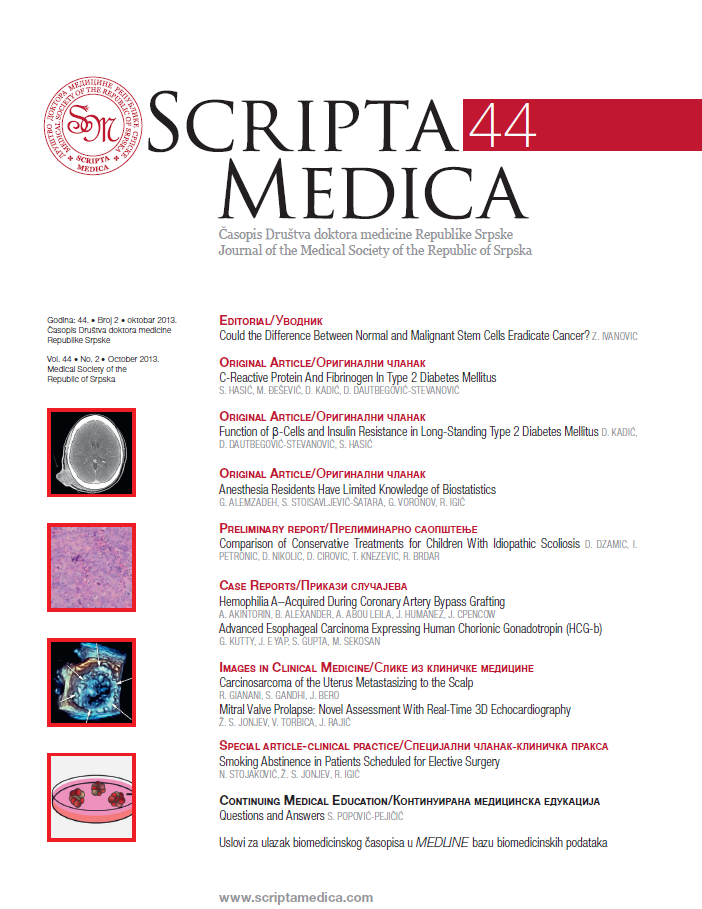Comparison of Conservative Treatments for Children With Idiopathic Scoliosis
Abstract
Introduction. We evaluated the effectiveness of different methods of conservative
treatment modalities for the treatment of idiopathic scoliosis in children.
Patients and Methods. The study included 61 patients with scoliosis. The
modalities of physical treatment included exercise, exercise plus traction, exercise
plus mider, or a combination of exercise, traction and mider. We evaluated three
age groups: patients between 5 and 8 years of age (Group 1), those between 9 and
11 years of age (Group 2) and those between 12 and 14 years of age (Group 3).
The follow-up period was three months after the initial treatment, during which all
patients continued physical treatment. The outcome was categorized as improved,
unchanged or worsened.
Results and discussion. After three months of treatment the most frequent
outcome was unchanged (62% of all participants). Exercise was the treatment most
frequently applied (54% of the total group). We found no signifi cant difference in
treatment modes and treatment outcomes after three months (p>0.05). Exercise
alone was the most effective treatment for the youngest patients (Group 1). We also
noted that a combination of exercises and traction was most effective in patients
above 10 years of age; the majority of other patients showed either improvement or
unchanged outcomes in curve progression.
Conclusion. Patients with congenital scoliosis should be assessed individually
using a multidisciplinary approach. The rehabilitation program should be individually
prescribed, implemented daily and should include regular check-ups between three
and six months to assess spine curve progression.

